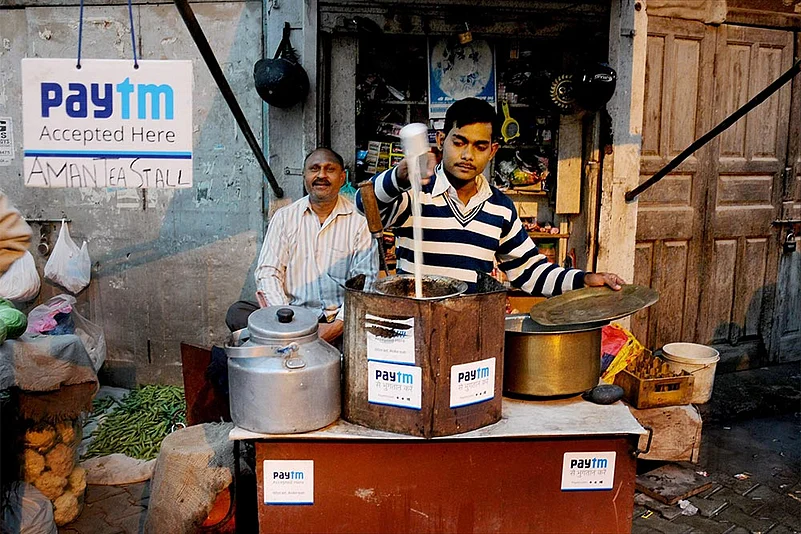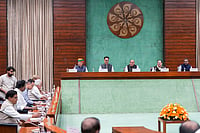It came like a second Big Bang, a new birth, millions of years after the original genesis. With demonetisation, Prime Minister Narendra Modi rewrote the very code of India. Sixty days after the country’s biggest economic decision since 1991, it is time to assess what has happened and look at what needs to happen. Has Modi delivered a new big bang theory for India—an act of creative disruption—to create a new normal?
One question needs to be addressed first. Is the government changing the goalposts in arguing for a ‘less-cash’ economy? Let us be clear: history and the public will judge the policy by the goals set in the prime minister’s address to the nation on November 8. He named four targets—corruption, black money, counterfeiting and terrorism finance. Reducing the use of cash cannot be an end in itself—but it is certainly a means to the ends the PM set. Digital payments leave audit trails, cash does not. Is cash the only store of black money? Obviously not. But other stores of wealth like gold and real estate require stocks and flows of cash if they are to be transacted conveniently and anonymously in black. Cash is not the entire black empire—but it is the emperor. Dethroning that emperor is crucial to conquering the empire. The digital push must be evaluated for what it is: a way to score the goal, not the goal itself.
For over a year, the RBI had been bemoaning the fact that there is no transmission of monetary policy initiatives (i.e. cuts in interest rates) by banks to customers. Now, within two months of demonetisation, there is a one per cent rate cut by several banks—this must count as a most powerful macro-economic effect, which will have an attendant impact on housing loans etc.
Coming back to the goals, some other immediate results are visible. Kashmir has seen a sudden decline in internally sponsored violence; schools have opened up in the Valley after months of unrest and exams have been held. Though, in a bid to compensate, our neighbour has stepped up overt cross-border firing. In another conflict zone, Maoist surrenders were at record levels in November. Media has reported that the ‘counterfeit capital of India’, Malda district of West Bengal, has been badly hit. The true test will be whether this will be sustained, but experts believe it will take years for extremists to rebuild hoards of legal and counterfeit cash.
On black money, in the short run, an indicator of success would be the sum total of cash that is not exchanged, increased direct tax revenue (at higher rates) and increased loan recoveries. To be fair, the PM never came up with estimates of how much money would not be exchanged—it was analysts who did. It does look like the analysts’ estimates will not be achieved. But the move is having structural effects that will endure much longer. Even if most of the money is returned, it would have lost its anonymity. Every rupee would have left a trail. Holders of black money may hide behind the bank accounts of others, but unlike with cash holdings, they can be traced. In this game of hide-and-seek, they have 50 days to hide, but the government has six years to seek them and work is under way through leaders in the big data analytics space. In a well-planned move, the government notified the Benami Transactions (Prohibition) Act exactly a week before demonetisation. The revenue department has already made it clear they will be using big data analytics to trace the money and catch the culprits. Joining the mainstream by paying in to the new Garib Kalyan Yojana is likely to be the rational and wise choice for many.
On corruption, the results have been mixed. There were stories—not all apocryphal—of petty officials turning down 500-rupee bribes and insisting on 100 rupees. It is said the “servants quarters” of Lutyens’ Delhi are enjoying a bonanza. Yet the money can now be traced if the government is sufficiently determined and tenacious. However, demonetisation has cast new light on the extent of corruption in our banks, both private and public. The banks have proved a weak link, with bundles of notes getting out to the rich through the backdoor while others queue up in front.
If corruption and black money are cancer, then demonetisation is chemotherapy. Leaving the cancer to spread would have prevented India from ever becoming a developed nation with functioning tax laws, a reasonably honest government and benefits for honest citizens. All other treatments have proved ineffective—so chemotherapy was needed. But chemotherapy affects the whole body, including the healthy parts. Apart from the hardship and inconvenience, a temporary slowdown in the economy is inevitable—the question is how long will it last. Effects on the poor have been widely mentioned, but a study by researchers from the Indian School of Business using NSS data indicates the poor are relatively insulated and won’t have to visit banks more than perhaps once, unless they are acting as agents for the dishonest to exchange notes. It is of course obvious that the truly poor have few high denomination notes. And this is one government scheme where the leakages have all been pro-poor—labourers paid months of wages in advance, unemployed youth paid to stand in line, landless labourers paid to put money in their accounts or given interest-free loans.
The important question is, what is next? The biggest task, beyond making enough currency available, is to provide a path to legality for cash-dominated sectors like small and medium enterprises. They need amnesties for past illegalities in areas ranging from local, state and central taxes to labour laws. They need a quick and liberal flow of formal credit to replace the cash. The original ‘Mudra’ idea of a new ecosystem for the small sector—not just more loans from nationalised banks—needs to be implemented immediately. Short-term loan forbearance is essential.
India has about $4 trillion real estate stock value, $850 billion gold, $1.3 trillion bank deposits, $350 billion insurance, $275 billion equities and about $275 billion cash, as per estimates. The signalling effect of cash demonetisation has been huge and will go a long way towards changing human behaviour, which is the hardest to do anytime anywhere. Now it is time to get after benami property and gold, wherein it is far harder to separate the legal from the illegal—though looking closely at “genuine fake” power-of-attorney sales, especially in Delhi and Mumbai, can perhaps be one starting point. Getting after capital gains tax havens, P-notes and attacking round-tripping, and over-invoicing/under-invoicing mafias are other possible steps.
This will be crucial to ensure a quick rejuvenation of activity and employment. It will require speed and boldness from bureaucracies in North Block and Mint Street not known for either. But this PM can make it happen. And he will. Modi’s Big Bang is under way. Future generations—and the present, all right-thinking people in fact—must contribute and applaud.
(The author is an IAS officer. The views expressed are personal.)
















